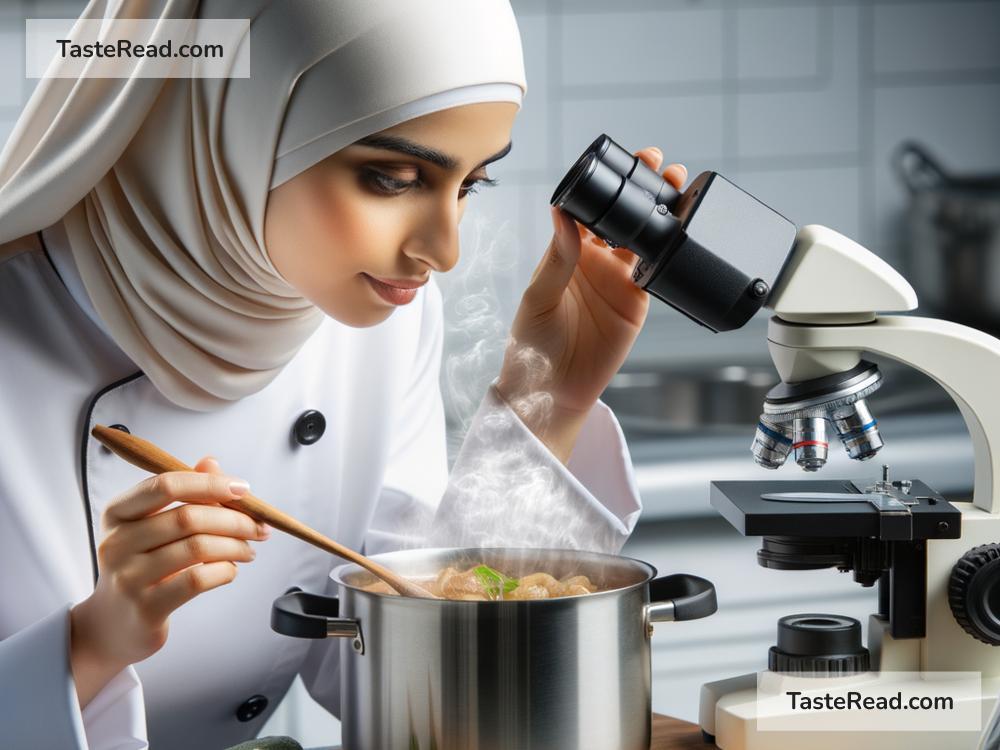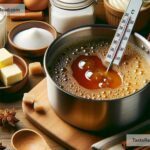The Science of Cooking with Biological Processes: Techniques and Tips
Cooking is more than just mixing ingredients and heating them up; it’s a fascinating science that uses biological processes to transform food into something delicious and nutritious. By understanding how biology works during cooking, you can improve your techniques, make tastier meals, and even better preserve your food. Let’s explore the science of cooking with biological processes and discover some handy tips to use in your kitchen!
Understanding Biological Processes in Cooking
Biological processes in cooking involve how living things or their components (like enzymes, bacteria, or cells) interact with food. For example, fermentation, yeast activity in baking, and the breakdown of proteins and carbohydrates are all biological processes. When you cook, you’re often managing these natural reactions to achieve a desired taste, texture, or appearance in your dish.
Key Biological Processes in Cooking
-
Fermentation
Fermentation is a process where microorganisms like bacteria or yeast convert sugars in food into alcohol, acids, or gases. This is the magic behind foods like bread, yogurt, cheese, and kimchi. For thousands of years, humans have used fermentation to create flavorful and long-lasting foods. -
Tip: To master fermentation, keep your environment clean and your temperatures consistent. For example, making homemade yogurt requires keeping milk at a steady warm temperature to help the bacteria grow and do their job.
-
Enzymatic Reactions
Enzymes are proteins that speed up chemical reactions in food. For instance, an enzyme called amylase breaks down starch in bread dough into sugars, giving yeast something to “eat” to produce carbon dioxide bubbles that make bread rise. -
Tip: When using fruits with enzymes (such as pineapple or papaya) in recipes, be aware that they can break down proteins quickly. This is why pineapple can tenderize meat but might prevent gelatin from setting in a dessert – the enzymes are still working!
-
Bacterial Growth
Certain bacteria are good for cooking, like the ones in probiotics that help ferment foods such as sauerkraut or sourdough bread. These bacteria not only enhance flavor but can also benefit your gut health. -
Tip: When you’re fermenting foods, give the good bacteria an environment to thrive by avoiding temperature extremes and using clean jars or containers to prevent harmful bacteria from taking over.
How Heat Impacts Biology in Cooking
Heat plays a crucial role in controlling biological processes during cooking. When you heat food, you effectively stop or change many natural biological reactions. It’s why raw dough turns into bread or why boiling water kills harmful bacteria.
Techniques That Rely on Heat and Biology
-
Pasteurization
This technique heats liquids like milk or juice to kill harmful bacteria while preserving taste and nutrients. Pasteurization ensures food safety without ruining the product. -
Caramelization and the Maillard Reaction
Heat can turn sugars and proteins into something delicious through caramelization and the Maillard reaction. This is why toasted bread and grilled meat have mouthwatering flavors and colors. -
Boiling and Steaming
Cooking vegetables in boiling water or steaming them not only softens their cellular structure but also locks in nutrients when done correctly. -
Tip: Avoid overcooking vegetables, as prolonged exposure to heat can destroy biological nutrients like vitamins. Instead, use quick steaming methods for vibrant, nutrient-rich veggies.
How to Use Biological Processes for Better Cooking
By using biological processes consciously, you can elevate your cooking skills. Here are some practical techniques to try:
-
Marinating Meat
Marinating meat isn’t just about flavor; it’s a biological reaction! Acids in marinades (like lemon juice or vinegar) help break down the meat’s protein, tenderizing it. -
Tip: Give your marinade enough time to work—at least 30 minutes to a few hours (or longer for tougher cuts of meat).
-
Making Sourdough Bread
Sourdough bread relies on natural fermentation with wild yeast and bacteria. These microorganisms digest sugars in the flour and create gas bubbles that make the dough rise. -
Tip: A healthy sourdough starter (a mix of flour, water, yeast, and bacteria) is the secret to great bread. Feed your starter regularly to keep it active and thriving.
-
Ripening Fruits
Did you know fruits “ripen” thanks to enzymes breaking down starches into sugars? That’s why a green banana turns sweet and yellow over time. -
Tip: Speed up ripening by placing fruits like bananas or avocados in a paper bag. The enclosed space traps ethylene gas, a plant hormone that promotes ripening.
Preserving Food Using Biological Processes
Biology isn’t just helpful for cooking—it’s also key to food preservation.
-
Pickling
Pickling uses acid (usually vinegar) to stop bacterial growth, preserving foods like cucumbers, onions, and eggs. The acid prevents harmful bacteria from surviving while allowing the food to remain tasty. -
Tip: For homemade pickles, use sterilized jars and always keep your pickled items in the fridge for safety.
-
Drying
Drying food removes water to stop microbes from growing. It’s a biological approach to preservation used for fruits, meats, and herbs. -
Tip: Keep dried foods in airtight containers to prevent moisture from making them spoil.
Conclusion
The science of cooking with biological processes is an exciting way to understand and improve your food-making skills. Whether you’re fermenting, marinating, ripening, or baking, knowing how biology works in your kitchen helps you achieve better textures, flavors, and health benefits.
Cooking is not just about following recipes—it’s about experimenting and learning how nature works to transform your ingredients into something amazing. By using these techniques and tips, you’ll become more confident in harnessing the power of biology to create culinary masterpieces. Happy cooking!


